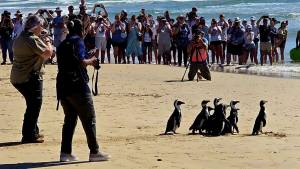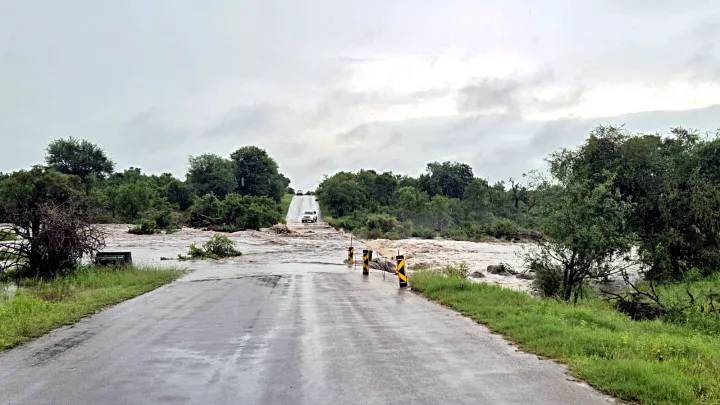
11 Critically Endangered African Penguins Released in Plettenberg Bay
There’s a particular kind of magic that settles over the Garden Route during the festive...
 23 December 2025
23 December 2025 
Reports from Mpumalanga and Limpopo suggest that recent heavy rains in the northeast of South Africa have damaged roads, bridges, and camps in Kruger National Park. According to SANParks, both the north and the south of the park have been affected, forcing park authorities to redirect traffic in several areas.
Videos on social media show extensive damage, with some unlucky campers returning to find their camping gear underwater. In the meantime, SANParks has confirmed that all gates remain open, although continued rains might lead to further road closures. The Kruger National Park Disaster Management Team is currently working around the clock to attend to possible emergencies.
If you’re currently in and around Kruger National Park or are planning a self-drive safari adventure anytime soon, here’s what you need to know about the flood damage.
“The recent heavy rains experienced in most parts of the country have resulted in the closure of some of the camps and gravel roads in the Kruger National Park,” says SANParks. “Some of the main roads between Skukuza and Lower Sabie were damaged, but the KNP Roads Management team moved swiftly to ensure safety for users, including tourists.”
It adds that the flooding has mainly affected the area south of the Olifants River, including roads between Skukuza and Lower Sabie, while forecasts suggest that the Sabie River and Sand River will be “inundated with heavy flows for some time.” Earlier in the week, the South African Weather Service sent out an advisory warning of disruptive rainfall in Limpopo and Mpumalanga.
According to the Daily Maverick, some park guests have been moved from their camps as a precautionary measure. Speaking to the publication, Nadav Ossendryver of Latest Sightings said that the online platform first received reports of flooding on 11 January. By 13 January, damage had already been done to park infrastructure.
He added that rain has been virtually continuous since December and that, according to a safari guide in Kruger, “every little drainage line is now a river.” Meanwhile, videos circulating on social media show the extent of the damage in the park.
The South African Weather Service released new weather alerts on 15 January for “severe thunderstorms” in several areas in and around Kruger National Park. These include:
A yellow level five warning for disruptive rain has been officially issued in both Limpopo and Mpumalanga.
Isaac Phahla, the Kruger National Park communications and marketing manager, confirmed that some main roads between Skukuza and Lower Sabie were damaged, but they are currently being temporarily repaired to allow travellers to move between the two camps.
He also confirmed that the Talamati and Biyamiti bush camps have been closed as a precautionary measure. SANParks says its Disaster Management Team will update information periodically to help visitors plan their trips accordingly. Travellers are urged to call the SANParks reservations office before arrival to confirm if there have been any changes to their bookings.
“Thus far, no casualties or damage to personal properties have been reported; however, road users are strongly advised to be extra vigilant and cautious when crossing low-level bridges and not alight from their vehicles to remove debris,” he added.

Flooding at the Kruger National Park on Sunday Jan 12 | Photo: Latest Sightings/ Renata Kretzmann via Daily Maverick
With authorities expecting heavy rains and high river levels to persist in Kruger National Park, we urge all self-drive safari travellers to be safe and responsible on the road. It’s best to check with rest camp reception offices for road closures and alternative routes before hitting the road, and if you require assistance, contact emergency services immediately.